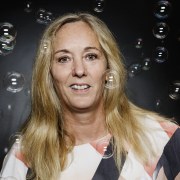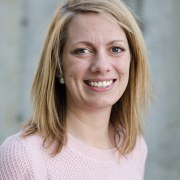Any UVS (Unidentified Visiting Subject) sightings recently?
Can we attract people we don’t usually reach and are there different ways to be accessible? This session will bring examples of different approaches and ways of reaching out to families, young people and children who don’t usually visit our science centres and museums. Participants get the chance to share whom they are trying to reach, too, so that we can specify this broad category as we go. We will also reflect on what science capital is and what it might mean for a child’s approach/interest in science if they have a rucksack packed with very little science capital. Can we meet these children and perhaps also their parents and move from a deficit approach to a more asset-based approach?
This session is part of the Equity and inclusion conference track.
Session speakers
Programme Manager - International Relations and Learning
Experimentarium invites families with ’low science capital’ to take part in a year-long set of visits to Experimentarium targeted the whole family. We call this initiative for Experimentarium-families. The aim is to give families who do not often visit Experimentarium (or similar places) an opportunity to explore and play with science and technology that reaches beyond the visits to Experimentarium. Sheena will present the ideas behind this initiative and the first results of conversations with families.
Jærmuseet and its science centre Vitenfabrikken (the Science Factory) started a 12 month long project called "Diversitas family workshops" in August 2021. The project is in corporation with the Norwegian Directorate for Children, Youth and Family Affairs. The goal of the project is to reach low-income families with a minority background, and to increase the interest for science and technology within this group. The method is to invite them physically to take part in workshops at the science centre once a month. Jærmuseet will share the experiences, the highs and the lows, the challenges we met and also the outcome for the participants and for the museum in this project.
researcher (ethnographer)
Claire will share insights from Berlin's Natural History Museum where we are looking at how hybidising and digitising museal spaces can facilitate access to museal content across various (intersecting) barriers at Berlin's Natural History Museum.
Based on empirical understandings of what 'the museum' or exhibitions mean to people, Claire and her team experiment with digital and technological means to try and create experiences that afford a great variety of people to enter 'the museum' through various channels. Thus, they hope to inspire people who might not consider themselves 'museum visitors', because museums are places 'not (made) for them' to explore museums in ways that stimulate and express their curiosities. Additionally, more practical barriers like timing can be overcome by expanding on museum-spaces so that working individuals are (theoretically) welcomed.



